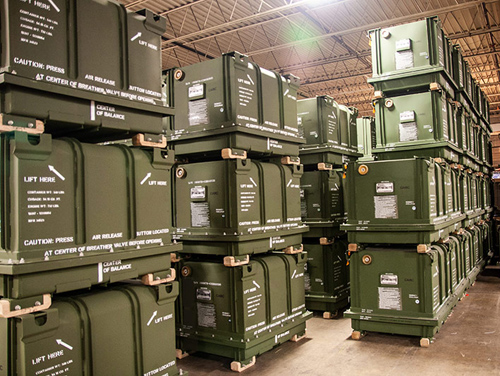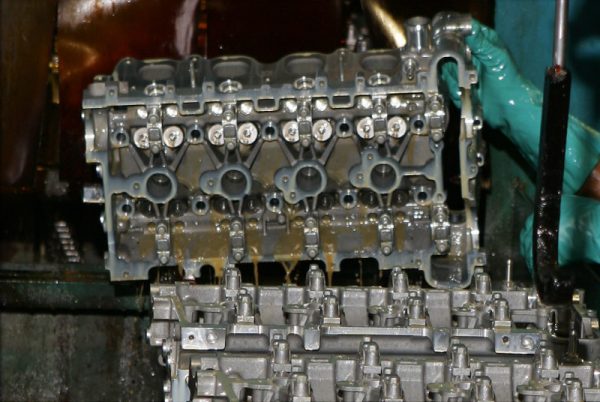MIL-STD-2073 PACKAGING
 What is MIL-STD-2073 packaging?In the packing and shipping industries, there are many acronyms related to various standards. MIL-STD-2073 packaging refers to the military packaging standard. This standard ensures that the contents of a package will not degrade during the shipping and storing processes.
What is MIL-STD-2073 packaging?In the packing and shipping industries, there are many acronyms related to various standards. MIL-STD-2073 packaging refers to the military packaging standard. This standard ensures that the contents of a package will not degrade during the shipping and storing processes.
Within the MIL-STD-2073 packaging standard, there are two levels: A and B. Military packaging level A is designed to keep contents safe and secure in the most severe conditions around the world, while military packaging level B is designed to keep contents safe and secure in more moderate conditions. Level A usually utilizes specialized custom wood crates, wood packaging, plastic, or metal containers. Level B typically requires fast-pack containers, domestic custom crates, fiber drums, shipping stacks, etc.
Mil-Spec packaging can be a tedious process, and it’s important that companies requiring military packaging work closely with shipping and storage companies that understand both level A and level B specifications.
What are the Three Components of MIL-STD-2073 Packaging?
The three components of mil spec packaging are packaging, preservation, and storage. Each component must meet strict specifications in order to remain in compliance with MIL-STD-2073 specifications.
Packaging
The first step of the military packaging process is packaging: in this stage, a label is created specifying that the item is to be shipped using MIL-STD-2073 specifications.
Preservation
 Preservation is the second stage of the military packaging process. In the preservation stage of the process, the items that are going to be shipped and stored are prepared to withstand issues that may be faced during the shipping process. Items are cleaned, dried, and preserved. Some items may need to be wrapped or cushioned to ensure that they safely reach their destination. Unit packing and identifying are also parts of the preservation process.
Preservation is the second stage of the military packaging process. In the preservation stage of the process, the items that are going to be shipped and stored are prepared to withstand issues that may be faced during the shipping process. Items are cleaned, dried, and preserved. Some items may need to be wrapped or cushioned to ensure that they safely reach their destination. Unit packing and identifying are also parts of the preservation process.
Within the preservation process, there are five methods that may be used to protect items. Physical protection ensures that items will arrive intact. Preservative coating only helps to protect items as they move from place to place but does not stop water or vapor from touching the item. Waterproof protection, watervaporproof protection, and watervaporproof protection with desiccant (a chemical that allows contents to dry quickly after getting wet) all offer additional levels of protection within the preservation process.
Packing
The final step of mil spec packaging is packing. During this stage, exterior protection is applied to materials. The packing stage includes several steps, including choosing a suitable exterior container and assembling the items to be shipped into said container, bracing and cushioning items against potential impacts, weatherproofing shipping containers against potential elements, strapping shipping containers into place, and marking shipping containers so that they can be easily identified when they reach their destination.
What are Military Packaging Standards For?
Throughout history, military resources have been lost due to poor packing standards. Military packing standards serve to increase the likelihood that packages safely reach their destination. In years past, environmental issues such as vapor, water, and other contaminants were not accounted for. When military items reached their destination, they were sometimes rendered unusable due to water or other contamination.
Military Packaging Services
At our Michigan packaging company, we’re proud to offer military packaging services. We have more than 70 years of experience in the packaging business, and we understand the importance of adhering to strict military standards. We are ISO 9001:2015 certified and ITAR registered, allowing our customers to trust that we adhere to best industry practices.
We offer many military packing services, including custom crates and wood packaging (including pallets, bases, and custom boxes), packaging services (including counting, boxing, and labeling), and kitting & assembly (including quality inspection and testing). Reach out to us today to talk about how we can meet all your mil spec packaging needs.
